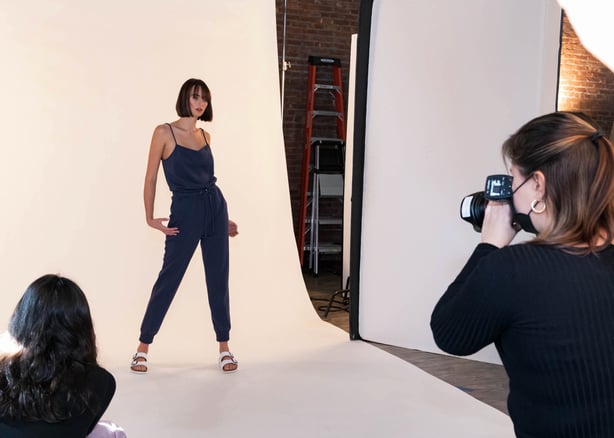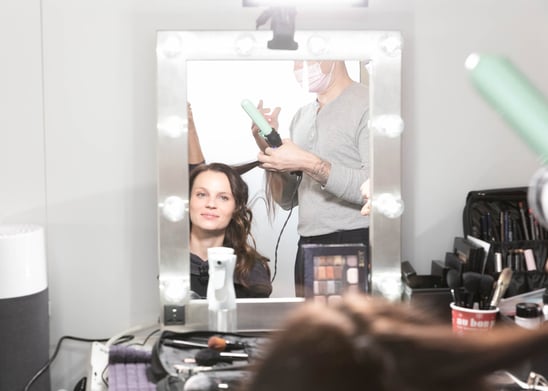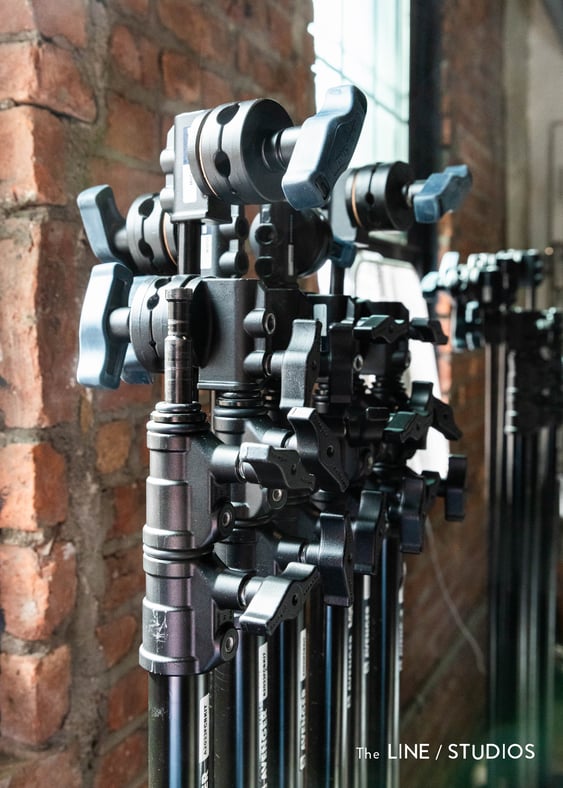Photographers: 10 KPIs to Improve Reporting in Your Studio
Dear Photographers, we know that you already have a lot on your plate. Thinking about KPIs is usually on the backburner compared to creativity, design, lighting, and actually taking photos. But, when planning out goals for the future and reporting to reach those goals, KPIs are going to really help you shine.
Hear us out, read below, and maybe just maybe, add a little more time on KPIs this month.

The term "KPI" has become a bit of a buzzword over the last few years, sometimes even eliciting a few heavy sighs from colleagues when the topic comes up in meetings. While it's not uncommon to feel fatigued around terms that get overused in a professional setting, don't discard the value of key performance indicators simply because you can't stand to hear the term 'KPI' uttered once more.
What are KPIs?
At the end of the day a KPI is simply information, and the highest-performing, most engaged professional teams embrace information. Whether you call it a KPI, metric, lead indicator, star in the sky, or index, knowing how your team performs is vital to solving problems, improving processes, and removing non-value-added tasks. It’s important to note that often in the real world, the terms metric, goal, and KPI are used interchangeably. In this article, we do call out some instances where the goal may be different from the metric, but overall it’s still about using data and information to improve a photographer's process.
» Did you read our comprehensive KPI guide written specifically for large eCommerce studios?
Making Use of Your KPIs
When it comes to creative production for eCommerce photographers, what are the KPIs we should use?
Well, the answer to that question differs depending on your goals and the organization's goals. But it is important to remember this: In order for a KPI to be useful and effective, it should be these three things:
- Contextual — A KPI cannot exist in a vacuum, you need multiple data points to provide context and a goal to determine which direction your team is moving. In other words, you need to know which way you’re moving, and whether or not that’s the right way.
- SMART — Specific, Measurable, Achievable, Relevant, Timely. You’ve probably heard this before and there are plenty of resources to read up on SMART metrics and goal setting.
- Measurable with minimal impact — Yes, measurable is part of SMART, but we’ve pulled it out to modify it a bit. You should be able to measure performance with little impact on your studio team. Too often a new KPI is sent down to the studio teams with no way to measure it, and so some archaic system of spreadsheets, note-taking, or self-reporting is implemented to capture the data.
If measuring the goal impacts the performance of that goal,
you need to come up with something better.
So, now that we’ve gotten that prerequisite out of the way, here are ten KPIs photographers can consider for your creative production studio.
- Safety
- Cycle Time and SLA
- Image Coverage / In-stock, Not Live
- Throughput
- Productivity
- Quality
- Re-shoot Rate
- Utilization
- Sample Aging Report
- Retail Sales
1. Safety as a KPI?
You might think of safety as more of a requirement than a KPI, but consider this: without safety as a guiding principle of your studio there is the potential for your goals, metrics, and KPIs to push your team into unsafe behaviors. Safety can be a requirement, it can be a goal, and it can also be a KPI. It SHOULD be all of the above.
There's always been a certain amount of risk present in creative studios. Between strobe packs capable of intense electric shock, garment steamers operating at over 200°F, and the risk of falling rigging or set, there are a lot of ways photographers or anyone in the studio can get hurt.
It is a photographer's and studio leadership's responsibility to put policies in place to keep people safe. Require safety incidents to be reported, and safety protocols to be followed. This is one KPI that has an exception to measurable with minimal impact. The ROI for tracking safety is well worth it.

2. Cycle Time and SLA to Drive Improvement
Cycle time and SLA are related but not quite the same thing. The cycle time is simply how long the process takes from sample receipt to image delivery. SLA, or service level agreement, is a commitment to doing the process in a certain amount of time. At in-house studios, this is sometimes called speed to web, which can be an important metric for your studio if one of your core goals is getting products online quickly. For external studios providing services to clients, this is often what your clients or stakeholders want to know: How long until I get my images? This is one of the unique things about SLA, it can be an explicit agreement with external stakeholders, whether they are clients or another internal department.
Cycle time is a key metric that can help you drive improvement in your process. Measuring cycle time, setting goals, implementing process changes, and re-measuring cycle time is about as basic as it gets in process improvement, and the argument can be made that any process improvement that has a measurable impact on overall cycle time, is a necessary one.
3. Image Coverage/In Stock, Not Live
If you’re delivering to a retailer, this is a key measure. In most cases, you cannot sell a product online without an image to represent it. For larger retailers, you should have clear visibility into what products you sell and what is currently not able to be sold because of a lack of images. An image coverage metric gives your sample teams some insight that they might need to go hunt some things down to make sure they get in the studio. A KPI for your studio may simply be the percentage of products that are sellable with imagery or may be an indicator of how quickly your sample management and studio teams can identify stock without images and bring them in to correct the situation.
4. Throughput KPIs In a Given Timeframe
You can slice and dice throughput in several ways, even down to the individual, set, or task level, but at the highest level, we’re just looking at how many images your studio produced in a given period. This metric helps you create a baseline for several things, not the least of which is productivity goals.
Throughput is great for resource planning. Where productivity is a metric against a goal that can take into account a lot of other metrics, throughput is simple. What throughput can lack is proper context, so it needs to be reviewed in the right situation by someone who knows how to qualify the data. When used properly, throughput can be an important studio health measure. If your studio throughput runs at a certain number for a long period, then suddenly dips or spikes, it can be an indicator that something is wrong and your process needs to be reviewed.
5. Productivity vs. Value
Productivity is more than just throughput. Typically productivity is a check of throughput against something like budget or headcount. It’s not just how much was produced, but what resources were required to produce that amount. This is the metric that CFOs speak about because it boils down to the cost of operating a studio. This is also where you can identify value add images that may or may not help in selling the product. Shooting two images can cost up to twice as much as a single image, but it may not add the value you think it does. Reporting on the specifics of these will not only help you meet your goals, but hopefully, help photographers lower costs on future shoots.

6. Quality, Quality, Quality
KPIs for quality are always a challenge. We often think of aesthetics when we think of quality for a creative studio, and that can certainly be part of it, but that’s a very subjective metric that can be difficult to measure. We can use some objective facts about an image to help measure quality. Quality isn’t just “how does this image look” but it can also be things like adherence to technical specs, adherence to a style guide, or we can use re-shoot rates to indicate quality. When considering aesthetic quality, you need a system for timely, if not real-time feedback. Quality in an eCommerce studio is usually binary, either good enough or not good enough. If it’s not good enough, it should be addressed quickly to avoid a potentially unusable image.
A bad image isn’t a problem if it hasn’t left your studio.
7. Re-shoot Rate and Reasoning For It
While this can be an indicator of quality, we separated this one because poor quality isn’t the only reason for a reshoot. A reshoot may be triggered by styling decisions, wardrobe availability, merchandising changes, and the list goes on. Knowing how many reshoots are occurring in your studio and why is valuable. Rejection reasons should be categorized and reviewed to identify potential process changes. You cannot reject an image without a reason, otherwise, you risk the image being shot the same way again. Make sure your team is always reporting the reasoning behind the reshoots.
8. KPIs for Equipment and Space Utilization
Utilization can refer to several things, from sets and equipment to studio square footage. It can be useful to help you understand how your space is used and guide future restructures or reorganizations. This metric is generally a byproduct of other metrics and should be relatively easy to measure. If you aren’t currently capturing what set an image was created on, you should be!

9. Sample Aging Report (Long-term)
Samples can get misplaced and mislabelled. Even with top-notch technology and proven processes in place, mistakes happen. A sample aging report might be less of a long-term KPI and more of a call to action. Is your reporting telling you that you have 3 samples that have been in the studio longer than 3 months? It might be time for a deep clean.
10. Retail Sales in Relation to Photography
Innumerable variables are in play when analyzing retail sales, and while it is proven that imagery impacts sales, we caution against using it as an actionable metric. That being said, it can be quite interesting and insightful to know how retail sales break out along studio teams. If you are a large retailer that operates multiple studios, big shifts in retail sales might tell you something about your team’s processes and/or leadership.
Determine the goals for your team, decide how to measure current performance against those goals, and then be willing to adjust them as needed to make sure you are setting your teams up for success.
Conclusion
This is simply a list of some common KPIs and why they might align with a photographer's studio or organizational goals. Whether you use all or some of these, the bottom line is this: determine the goals for your team, decide how to measure current performance against those goals, and then be willing to adjust the goals as needed to make sure you are setting your team up for success.
Metrics should not be something that your team fears, but a reasonable benchmark to learn from and improve.


